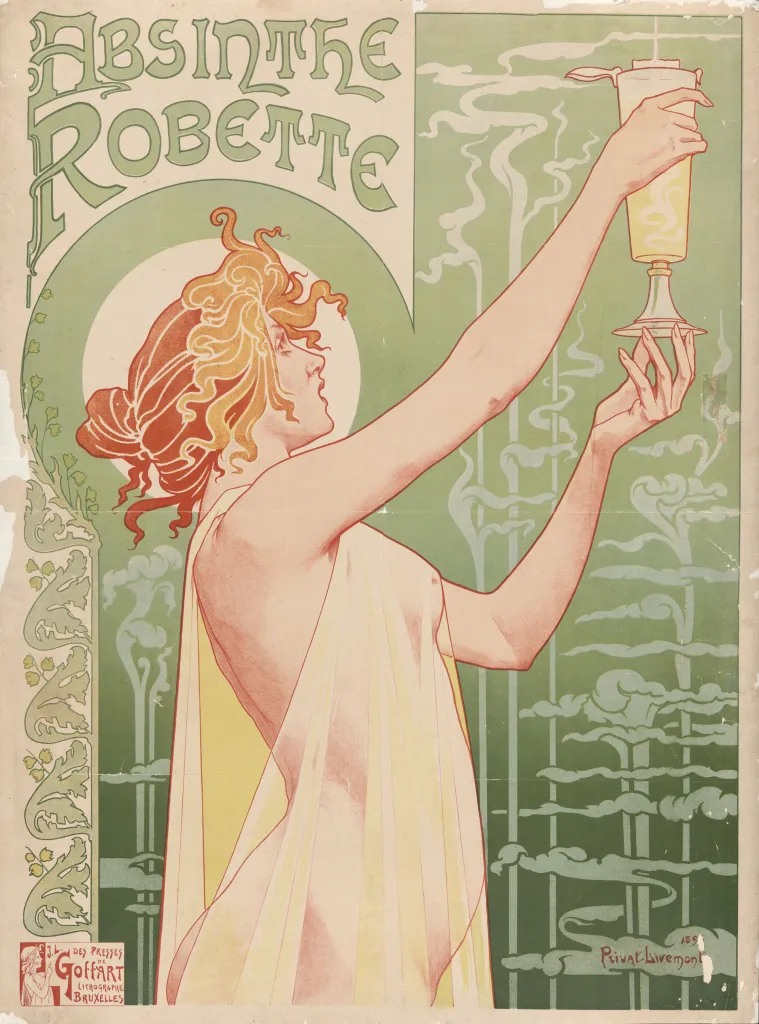
A Diversion on Absinthe
It was time for the press screening of The Happy Prince, Rupert Everett’s new bio-pic of Oscar Wilde’s post-prison depression, to be shown at the headquarters of Sony Pictures in New York ahead of its general release in the U.S. later in the month.
I decided to prepare in a manner becoming the movie.
First it was off to meet three friends for lunch at the Oscar Wilde Bar. You know the place: I mentioned it recently in Twenty Seven and also blogged about it upon its opening.
Magically, the friends fitted in with the theme: there was a friend called Robbie and an another actor who once played Bosie on stage: thus the appropriate Wildean rivalries were established at the outset. I won’t bore you with the food except to warn you against the beet (i.e. beetroot) salad which is 95% beets, and the rocket wasn’t at all remarkable.
The conversation, however, like the wine, was sparkling. An eclectic mix ranging from Audiation (which was a new subject to me but basically means sound thinking) to who’s buried in Père Lachaise Cemetery.
Hugo First
This cemetery idea was also useful for playing our newly minted Lachaise variation of Mornington Crescent with Oscar’s final resting place as the destination.
This might sound esoteric, so to provide some simple guidance for the uninitiated wishing to play, here’s what we learned: it is not possible to reach Epstein’s genitalia-challenged edifice without passing a French painter (unless you’re taking the Pissarro route—half Belgian, you see; that Maria Callas’ urn is inadmissible since someone has stolen her ashes; ditto Chopin’s grave because his heart isn’t in it (literally) having been separately entombed within a pillar at the Holy Cross Church in Warsaw; naturally if you land on Victor Hugo, go straight to gaol; also pay $50 if passing anyone with a perversely Wildean name, such as Rossini; but always (at least try to) collect $200 when landing on any of his real life friends. And before I forget, make a left at Proust, obviously.
Going to the Dogs
Speaking of Proust, we were in search of lost time ourselves. I did say “lunch” back there, but the 1:30 PM repast rendezvous didn’t actually finish until twenty minutes to five, and then only because the film was starting at six, and we first wanted to see the Sony robot dog.
We didn’t get to see the dog, unfortunately, as Sony Square was pre-empted by a Mexican singing starlet whose name I can’t remember, and the entrance was bordered by a wall of fans whose faces I can’t forget. We were clearly singing from a different song sheet and needed to change our tune so that it chimed again with the celebratory tone of the movie overture. And it’s always nice when lunch segues into happy hour.
Happy Princes
Where better pour boire à la santé de M. Melmoth than a French restaurant?
So it was off to the nearby Boucherie — not to eat, mind you. Still full from lunch, and besides they cater somewhat predictably to the carnivore. However, beyond the deli counter—excuse me, charcuterie—they have an absinthe fountain!
Consequently, they do not call it Happy Hour around here—it’s called The Green Hour, this being the appellation of the absinthe menu.
A tale of Two Cities
It was the Frenchiest of times, it was the Americanest of absinthes. A far, far, larger absinthe than I have ever known.
But a cubeful of sugar helped the médecine sans frontières achieve Oscar’s dictum vis-à-vis one absinthe, and we were seeing things as we wished they were. Yet two happy princes—just Bill and me by now—had to prepare to see things as they really are: i.e. full of horror. In other words: a film about Oscar’s sad exile to France and untimely death in Paris.
Not wanting to risk the necessary third absinthe for this effect, it was la fin de la fée verte and we summoned the required gloomy mood for ourselves before returning to the Sony building to negotiate the Mexican border.
My review of the The Happy Prince is here.
© John Cooper, 2018
Artwork: L’Absinthe, by Edgar Degas, 1876. Musée d’Orsay, Paris.
Absinthe poster image (top): by Henri Privat-Livemont (1861–1936). From 1883 to 1889, Privat-Livemont worked and studied in the studios of Lemaire, Lavastre & Duvignaud, and with Lemaire, he created the decor of the Theatre Francais and the Hôtel de Ville, in Paris.



As always, the exquisite ambiance and friendly service was conducive to our group’s comradery at the Oscar Wilde. And the same can be said for the mixtologist at the Boucherie. The Happy Prince production…was not so happy. But I really enjoyed it!
LikeLike